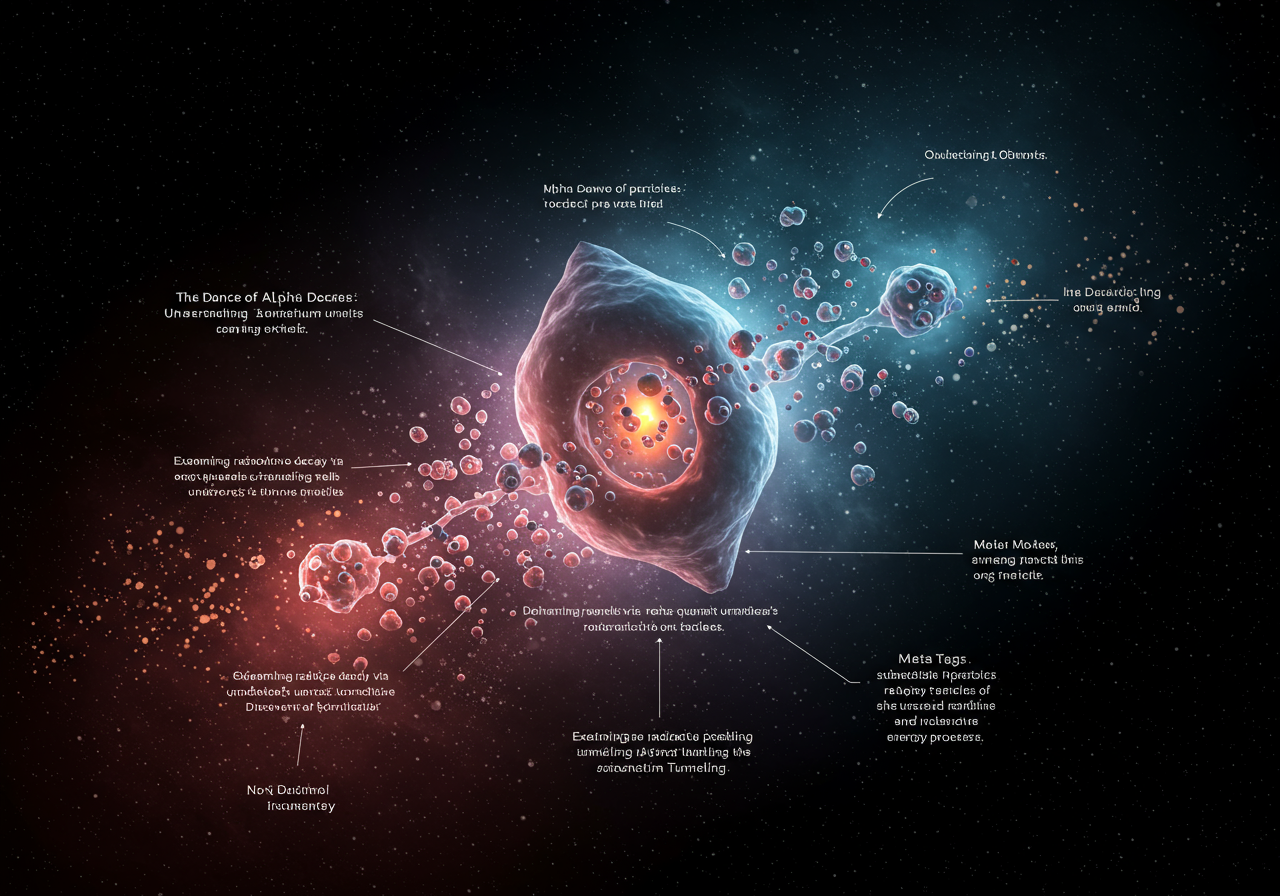Alpha decay and quantum tunneling might sound like subjects confined to the pages of a physics textbook, but they offer us profound insights into the quirks of our universe. Imagine a world of atomic nuclei where particles engage in a whimsical dance, breaking free in a manner that defies conventional rules. This phenomenon, observable in alpha decay, lets tiny helium nuclei escape from their atomic fortresses through a process called quantum tunneling.
Now, if you picture an atom’s nucleus as a treasure chest inside a sealed fortress, most particles seem content to stay put despite their high-energy antics. But sometimes, an alpha particle decides to make an unexpected exit. This isn’t just an ordinary escape — it involves slipping through barriers that should be impenetrable, revealing the playful side of quantum mechanics.
To understand this, we dip into the quantum world where classical physics steps aside. Imagine a penny trapped between two giant stones. It seems permanently stuck, yet in the quantum realm, this penny — our alpha particle — can find a way to pass through these barriers, thanks to quantum tunneling.
In this subatomic game, alpha particles, which are essentially helium nuclei made of two protons and two neutrons, stay trapped unless quantum tunneling offers an escape route. It’s not a random process; rather, it’s guided by the intricate rules of quantum mechanics and the environment inside the nucleus.
An interesting aspect of this is “nuclear coherence,” a coordinated behavior of particles in the nucleus akin to synchronized swimmers maintaining order despite external chaos. This synchrony enhances the probability of quantum tunneling, making it possible for an alpha particle to escape.
Why does this matter? Beyond expanding our understanding of nuclear decay, quantum tunneling highlights that the universe thrives on probabilities rather than certainties. Our perception of reality might influence these fundamental processes, suggesting that even at a subatomic level, observers might play a role.
This exploration opens the door to profound implications, not just for physics but for life’s mysteries. Could quantum tunneling explain energy processes in stars or the decay of radioactive isotopes in medicine? As we deepen our relationship with quantum mechanics, science fiction begins to blend with reality.
In essence, alpha decay and quantum tunneling remind us that the universe is full of surprises, crafting a dance of particles and probabilities. These phenomena invite us to embrace both the mystery and the unpredictability of existence, encouraging us to tunnel through our understanding rather than merely break away from it.




